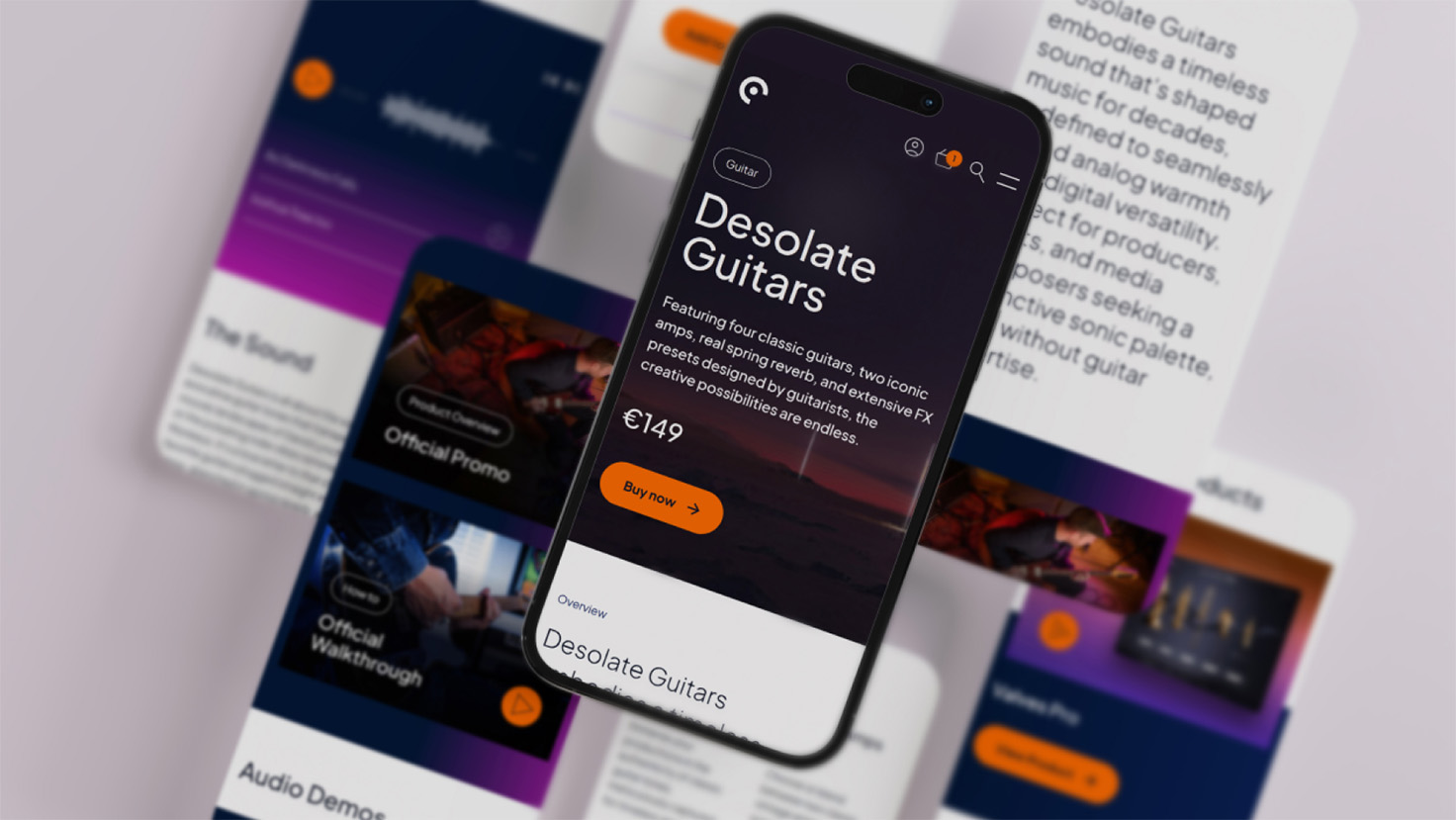The digital market place

2019 is already a year of groundbreaking changes, some of which you may, before reading this article, not have heard about. Of course, a lot of the predictions for 2019 / 2020 are to do with currently known techniques, but they still need to be considered, because if they (like the new ideas) are effectively adopted by your competition, your brand could lose out in the never-ending battle for market share.
These changes can broadly be broken down into two groups: –
Those that are variations of using known technologies/systems
Those that rely on new technology and systems
Some of the following trends will fall into both of the above categories, or at least the line will be blurred, but we will separate them as best we can.
Trends based on existing technology / methods
Effective social listening
Effective social listening is all about paying attention to the conversations on the various platforms that are about a business’s brand, or that of its competitors. Listening closely allows businesses to find out what type of content performs the best for their target audience.
Here the ultimate purpose for a brand is to develop a more personal relationship with their customers, and besides the listening methodology mentioned above, businesses should also ensure that they
- Ensure they ask and answer consumer questions on their website. To help with this, there are now two special Schema mark up systems, one for Question and Answer pages and another for FAQ pages.
- Creating engaging content. Apart from being good for SEO and helping to boost traffic, great content will bring your customers back to the site, each visit allowing your business not only to sell something but also to bond that little bit more.
- Ensuring a quick response time. It goes without saying in this day and age that ‘immediacy’ is everything. It is imperative to monitor all channels and reply to customer comments promptly.
Use of video
According to research, video content is shared 1,200% more than both links and content combined. Videos are hugely engaging and can when done correctly, create strong emotional connections. As they are increasingly being included in the search results, 2019 is likely to be the year when more and more businesses will focus on optimising their video content.
The areas that need special attention are:-
- The Videos title
- The Description of the content
The best way of using video will vary depending on your niche, but in all cases, you will want to include the relevant keywords in the video script (and make sure this is also available to the Search Engines). Also, consider using Closed Captioning. It is, of course, vital to produce content that is timely, relevant and of course engaging.
It is also important to think beyond YouTube as you can also make a video post or start a live broadcast on Facebook, Instagram or LinkedIn.
360-degree video content will more than likely rise. This offers a highly interactive experience, so look for the circular symbol in the top left corner and start sliding the viewpoint of the moving image about as it’s playing.
Increasing personalisation in email marketing
Personalisation is nothing new of course, but increasing the targeting of an email campaign has been proven to increase conversions, by the fact that people want to be considered to be ‘special’. This goes beyond knowing their name, and requires emails to be specially tailored to the market sector that they fall into, the emails promoting only those products that are interesting to that sector.
Time is short, so content needs to be short, punchy and memorable.
The rise in the use of mobile devices is having an effect in this area too. Businesses now have to ensure that the emails they send are accessible on mobile devices.
To sum up: Personalization = Maximize enjoyment + Minimize search time
Better use of current content for SEO
The creation of new interesting content is key to obtaining the best results from any website, but in many instances, sites have a lot of existing content, that could, with a little bit of work, bring in clicks of its own. This can be done manually, of course, using data from Google Search Console, but for big sites, applications like Clickflow can help.
The use of chatbots will increase
2019 will see the use of Chatbots on many more sites, predictions showing that over 80% of businesses will be using this technology by 2020. This existing AI-based technology uses instant messaging to chat to users in real time, and as time goes by are becoming increasingly clever.
Strange as it may seem many people actually prefer interacting with chatbots as they are responsive, provide answers quickly and accurately, and can recall everything you have ever bought. Best of all for some is the fact that they never lose patience.
From a business point of view, these virtual assistants can take over some repetitive tasks, giving you more time to focus on more important issues.
Influencing the market place using influencers
“Influencer marketing is a type of word-of-mouth marketing that focuses on using key leaders to drive your brand’s message to the larger market…. Rather than marketing directly to a large group of consumers, you instead pay influencers to get the word out for you.”
This can be a very effective marketing tool as it takes advantage of the modern obsession with celebrities. However, influencers also include Instagram or YouTube stars, well-followed bloggers and journalists. All of them will help spread the word for business more in 2019 than ever before.
Visual search
Visual search is quite new and takes user experience to a totally new level. Using visual search, people upload an image (possibly a photo they have just taken) and conduct a search to get very specific results.
Pinterest is a front runner here, having produced Lens, a visual search tool that allows users to take a photo of an item so that they can find out where to buy it online or to search for similar products.
They are not alone either; Google Lens is a visual search that can recognize objects, landmarks and other things using a camera app, It will then provide information on that object or place. However, at the moment this is only available on Pixel phones.
CamFind is another visual search mobile app, this too enabling users to search for anything simply by snapping a picture on their smartphone.
Marketers who use this latest technology will get the edge on competitors by taking advantage of the trend to visual search in 2019.
Podcast advertising to rise
Podcasts have seen something of a revival over recent years, and this has led to the growth in advertising on this channel. One of the most interesting factors here, to marketers, is that the channel is very ‘intimate’. This fits in with the drive for better personalisation and thus targeting.
The process is achieved by combining advertiser messaging with data such as the weather, time of day, geographic location, podcast name, category or device type to create thousands of unique combinations that can be used to target listeners.
“For advertisers, podcasts create opportunities for brands to deliver their message in contextual environments across a range of verticals,” says Ollie Deane, director of commercial digital at Global.
Online advertising changes
There are two areas here, one being the Search Marketing area, the other the adverts shown on ecommerce sites themselves, e.g Amazon.
In both instances AI impact on the way keywords are bided for and the way that adverts are written and the targeting of both (known as Programmatic Advertising), is set to increase dramatically. For this to work though, a clear conversion must be set, as otherwise the AI system cannot decide what is working and what is not, and hence cannot alter the way it buys keywords and runs adverts. Whilst this is OK for ecommerce sites, it can be harder for other market sectors. Used correctly, this system is much more efficient and reacts very fast to changes in the marketplace, which in turn means higher conversions and lower customer acquisition costs.
The one area that is set to rise dramatically is that of ecommerce Advertising, (Advertising that runs alongside and within the search results and product listings on e-commerce sites themselves). This is already well established in China and Asia and is set to rise in the Rest of World in 2019 / 20.
Ad spend set to move from Facebook to Instagram
Instagram is said to be an increasingly attractive place for brands to advertise. The data for 2018 suggests this trend will continue into 2019 and beyond. Advertisers are increasingly turning their backs on Facebook’s News Feed, instead preferring to use Instagram’s Stories.
The reason for this seems to be that, while having a smaller audience size, Instagram users are far more engaged. This results in the idea that Instagram is the place to go if you want to get higher levels of quality engagement.
News brands set to see a drop in market share
Newspapers have seen a dramatic drop in their print circulation figures over the years and their ability to monetarise the digital media that they have been ‘forced’ to use has not been a great success to date.
Things have improved now that issues like Viewability and Ad Fraud have been solved, and now that GDPR has been dealt with, brands are again starting to use quality content. However, the increase in the use of Social Media and Google have taken their toll and Ad spending with the national news brands in the UK could decline by over 9% in 2019 according to some forecasts.
This will undoubtedly lead to more publishers moving to subscription-based or membership models to sustain themselves. This could further stifle advertisers as in some instances, adverts could be banned (or at least reduced) on these news sites.
“There is a growing acceptance by readers that trusted, quality media is worth paying for, and a concurrent acceptance by publishers, that advertising alone will not sustain professional, honest journalism,” says Dominic Carter, group chief commercial officer at News UK, publisher of The Times, Sunday Times and the Sun.
The new technology and systems
Some of the items mentioned are not totally new, but the potential for change in 2019/20 is quite dramatic.
Voice search and smart devices / speakers
Voice search levels on all devices are set to rise in 2019. A part of this is due to the ever-increasing use of Smart Devices such as Alexa and the Google Home Hub. As companies are coming to terms with this new marketplace, we can predict that Voice Adverts will start to make their way onto the scene in 2019.
Companies are already optimising their online inventory to capture Voice searches of course, and here it is important to bear in mind that you have to write your content using a conversational tone. In order to win here, you will need to focus on getting listed for featured snippets on Google, all the time thinking about the phrases that people will speak, these often being different from the typed version.
Voice adverts
Yes, Voice adverts are set to arrive in this market area, Alexa perhaps giving you the answer to a question and then adding ‘a few words from our sponsor’. The material will of course have to be properly thought out and targeted, perhaps in a similar manner to the way that Podcast advertising has already started to use.
More use of Artificial Intelligence
AI is already being used to optimise adverts on Google, but it can also be used to analyse consumer behaviour and search patterns. By bringing together data from Google Analytics, Social Media or blog posts, businesses will be able to better understand how users and customers find their products and services. Supermarkets have been using data on how users navigate their stores for many years, but by utilising the growing power of AI, businesses could enhance their conversion rates dramatically in 2019/20.
Advertising on video on demand channels will increase substantially
You’d have to have been living under a rock for some years now not to notice the growth in Subscription video-on-demand (SVoD) services like Netflix. The size of this marketplace has naturally attracted the interest of advertisers, but now competition is starting to heat up for online video ad spend.
Advertising-funded video-on-demand (AVoD), like Now TV, Hulu and Sony’s Crackle, as well as Amazon is still in its infancy, but advertisers are fast beginning to see its potential. The rise is predicted to be quite dramatic, outpacing other media channels with spend set to double to $47bn by 2023 worldwide, according to Warc.
“Consumers’ voracious appetite for video content anywhere, on any device, has been propelled by SVoD services such as Netflix. But it is AVoD platforms which present the opportunity for advertisers to marry rich consumer data with pinpoint targeting during engaging content,” says James McDonald, data editor, Warc.
But perhaps the most exciting (and worrying for some?) change is that of geo-marketing
Whilst not quite being as advanced as the Eye Recognition advertising shown in the Tom Cruise film ‘Minority Report’, the use of Geo-Marketing is a close second.
It is true that this is not totally new. Businesses have been incorporating geo-marketing into their marketing strategies for a while now. The advent of more precise and accurate results has led to new technologies, such as geo-fencing.
This gets businesses one step closer to their customers by allowing companies to attract competitors’ clients or create awareness for their own brand based, very accurately, on their physical location.
The same system could be used to serve digital ads to mobile users when they are in a predefined geographic area is another way of using geo-marketing. This is used, in a basic form by Google of course, but the new systems allow the target area to be much more defined. One possible use is for a business to create a geo-mapping advert that only shows up in a quarter-mile radius of a competitor’s location. Here, every time a potential customer walks into that targeted location, they will be served with the ad for that business. This could potentially draw business away from that competitor. These targeted notifications are set to be an interesting way to obtain high engagement and brand awareness for any business.
Geofencing is normally embedded in an app or other software and uses GPS, RFID, Wi-Fi or cellular data to trigger a pre-programmed action when a mobile device enters or exits a virtual boundary set up around a geographical location, this being known as a geofence.
This pre-programmed action could create mobile push notifications, trigger text messages or alerts, send targeted advertisements on social media or provide location-based marketing data.
Of course, the App will have first to be loaded onto the mobile device and this perhaps could result in companies having to be VERY CLEAR what the App will be doing, especially in light of the way some online companies have been using data unwittingly supplied by their users in the past.
However, the future of this technology is interesting, to say the least.
Conclusion
In 2019 and 20, businesses will need to ensure that they are better listeners, providing their customers with the information that they need, whilst also using technology to enhance the level of personalisation.
They will have to better harness the use of AI-powered technology, to ensure they stay ahead of the curve and increase conversions.
But they will also need to become better at producing good, conversational content – especially podcast/audio and video content – and make sure that they fully understand how to target this onto their online audience.
If you would like to discuss your Digital Marketing requirements with the experts, please do contact the team at Rouge Media. We have the power to help your business prosper.




